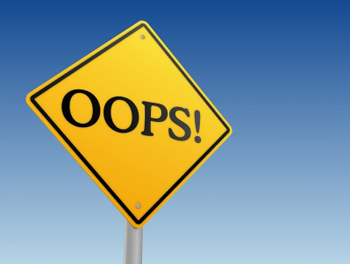
Top 10 Triathlon Training Mistakes
Most triathletes live busy live’s outside of training for races. Family, kids, work, life stress, etc. No matter how you want to categorize them all, to succeed in triathlon you have to find a balance with your personal life and the most efficient training you can do to have a great race. After many years in the sport, I see the same mistakes being made and want to share with the masses the top training mistakes I see most frequently being executed.
- Not resting enough on recovery weeks- If your schedule calls for a rest week, then the goal for that week is…..REST! I see this mistake made all too often, and does not mean take the week off and party like it’s 1999. This simply means to do some active recovery workouts and keep each session short and EASY. I see many triathletes that train 15 hours a week and a rest and recovery week is on their schedule and they put in 10 hours. That quite often is not enough, and most triathletes would benefit more by cutting back 75% of total volume for the week. Not only will the extra rest help in the short-term, but will also help down the road by spacing out the demanding energy output the sport will require.
- Too much intensity- It is easy to get caught up in this approach. Most triathletes forget that triathlon is an aerobic event and the focus should be primarily on making the aerobic system as strong and efficient as possible. Unless you are an experienced triathlete, race ONLY short distance races, and have an extremely limited amount of training time available than your best bet is to put most of your training hours in zones 1 and 2. It can take several years to reach a peak in the sport and rushing this process with too much intensity too soon will likely lead to injury (especially with running), or quitting the sport due to getting burnt out.
- Too much hard swimming- I see this mistake most often with the half ironman and ironman crowd. They will quite often put in 3 HARD swim sessions a week, which is too much stress when you are including bike and run sessions as well. Unless your swim is in danger of making the cut-off time, scared of open water swimming, or are a top runner or cyclist with a weak swim, you could possibly be wasting training hours. The swim duration is somewhere in the neighborhood of 10-15% of your total finishing time, so spacing out your weekly training hours is vital to your fastest possible finishing time. I have said a million times before, your coming first out of the water has no meaning if your bike and run splits are last. On top of all this, if you are a beginner at swimming then learning proper technique can take you very far vs. thrashing too hard only going a few seconds faster.
- Reality- This big slice has humbled most of us at some point. Athletes often will inflate their race goals to an unrealistic finishing time that is not conceivable. Triathlon racing can take several years to acquire the base to handle the volume to do well in the sport, so being patient is mandatory. I always recommend 3 scenarios for your finishing time- 1. Worst case- something bad happens, flat tire, nutrition mistake,etc 2. Realistic time goal based on CURRENT training pace,time-trials,etc 3. Best case- you find yourself feeling better than expected and your pace is faster as well. These 3 different outcomes can really play well in your favor and you won’t be setting yourself up for a disappointing finishing time.
- Nutrition- If you are reading this blog right now, you probably have a good idea on eating healthy and exercising (or maybe you don’t 🙂 The role that proper nutrition plays in recovery is vital, and can also be a tricky balance. When you are training, you are burning A LOT of calories and sometimes eating healthy 24/7 is not gonna cut it as far as satiety goes. I recommend filling up on nutrient dense foods first, then you can choose the “higher caloric/better bad food choices we love” second.This way, you will get all the nutrients you need and can focus on caloric deficits second. Try and aim for the 80/20 rule, where 80% of your diet is filled with healthy food choices, while the remaining 20% is filled with less healthy choices.
- Repetitive workouts- Most of us have been guilty of this at some point including myself. Unfortunately most of us will focus on the workouts we love the most, all while putting the one’s we don’t enjoy as much on the back burner. Quite often, it is the workouts we don’t enjoy the most, that are the one’s we most need to improve upon. Using proper periodization is the key to success for triathletes, and there are a variety of ways you can use this to your advantage. Maybe spend parts of your year focusing on your run endurance, maybe you live in a really cold climate and swimming in the winter is a good focus. If your race season starts in March, and ends in October, maybe your first peak race is a sprint triathlon and your focus will be on high intensity sessions, while your fall race is an ironman and you can build your endurance. You see the pattern here, always mixing up your sessions within micro and macro cycles.
- Not racing enough- Another aspect I see triathletes not doing enough of is testing themselves with short races. If your in the last 8-12 weeks of your build towards your peak race, then including a fair amount of racing can dramatically impact your potential. Sometimes athletes get too caught up in their mileage and would be better suited for short races every few weeks following a rest and recover week. Maybe you got a new bike fit and want to test it out? A new nutrition strategy? Even something as small as trying new lace locks on your running shoes, don’t wait until the “big race” to test these things out and only under racing conditions can you mimic such a thing.
- Weak recovery techniques- Nutrition from #5 above could be included on this list, but there are several other poor recovery techniques that athletes don’t pay attention to. Chronic dehydration, massage, stretching, sleep deprivation, proper warm-up and cool-down, listening to their bodies, listening to their bodies, as well as listening to their bodies. No, that isn’t a typo 🙂 listening to your body is THE most important recovery technique for triathletes. When to go hard? When to back off? When to indulge in bad food? A few important items to include in your recovery technique.
- Too much zone 3 – Most of us at some point get caught up in the “kinda hard workout” from time to time. If you are exercising purely just to exercise, there is nothing wrong with this. If you are training to improve for a goal, than nothing can be more counterproductive. One of my favorite quotes from Yoda states” do or do not, there is no try”, has a lot of meaning. In other words, either “go hard or don’t.” To find your training zones, you need to perform a handful of zone 4/threshold sessions to find out this pace/effort/heart rate. Don’t be tempted in a workout to pick up the effort just because you happen to feel good on this day. This will only take energy away from your hard interval session you have yet to do that week.
- OCD with data- In 2017 triathletes are bombarded with technology. Heart rate monitors, power meters, GPS, wrist watch, heart rate variability, the list goes on and on. Does data have a place in triathlon? The short answer is yes, it CAN provide vital feedback on training and racing that is crucial to your success. Recently, a good friend of mine ran a marathon. All through his training he ran with his Garmin, and knew exactly what his long run pace, as well as what his threshold pace was. The problem came race day, when temperatures and humidity were much higher than what he had been training in? I mentioned numerous times to do a handful of training runs not relying on pace and run more on perceived exertion. Race day came, and he did not know what effort to run having been guided by his Garmin in his prior sessions. You can probably guess the result, and he learned his lesson for next time around. Certain conditions can skew the ability to rely on data and can force the athlete to rely more on perceived exertion. Knowing when to avoid data goes along with #6 on this list and mix it up and not “solely” train with your technology.


